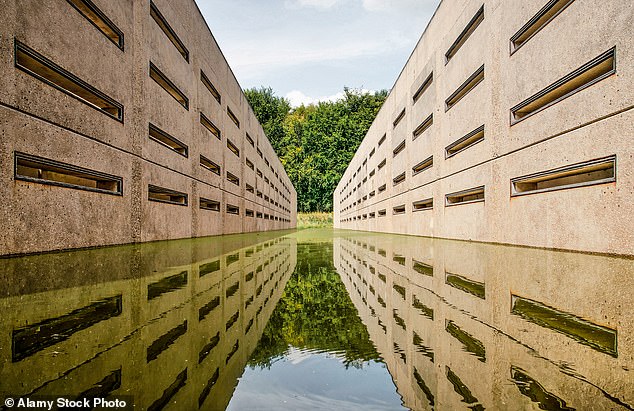Brutalism and beauty don’t often appear in the same sentence. But for 32-year-old photographer Olivia Broome the austere geometric buildings that dominated European architecture in the 1950s and 60s have a special appeal: as huge canvases for lush greenery to grow around and upon.
Broome’s new book, Brutalist Plants, presents more than 150 images of concrete structures colliding with nature. This one (below) is the Waterloopkundig Laboratorium in the Netherlands, an early 1950s open-air hydraulics research facility built in the middle of a forest.

The site was perfect: natural streams provided pump-free gushing water; trees gave shelter from the lowlands’ violent winds. These massive concrete blocks were trial models of storm-surge barriers copied for Delta Works, a £10.3 billion Dutch flood-control project that took 40 years to finish. Completed in 1997, it is recognised as one of the seven wonders of the modern world.
And the old site? Engineers from around the world came to test hydraulic structures until it was abandoned in 1996. Then in 2002 a Dutch nature conservation society acquired its moss-covered brutalist outcrops. Waterloopbos (‘forest of the streams’), as it’s now known, has a three-kilometre walking trail through the relics.
Brutalist Plants by Olivia Broome (Hoxton Mini Press, £20). To order a copy for £17 until 30 March, go to mailshop.co.uk/books or call 020 3176 2937. Free UK delivery on orders over £25.







